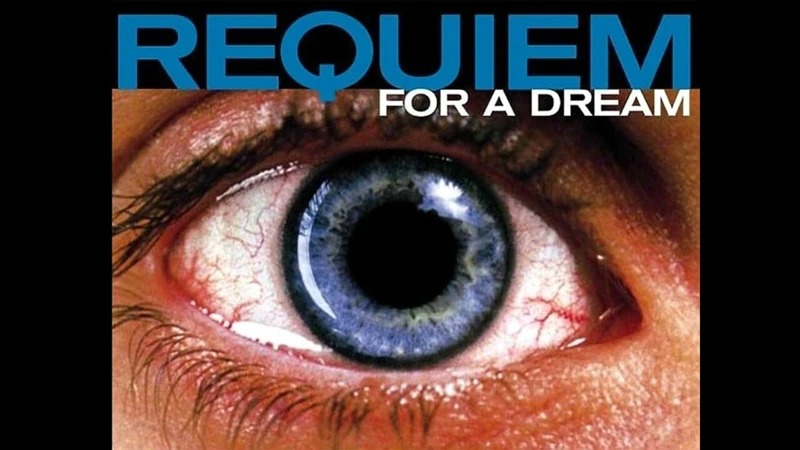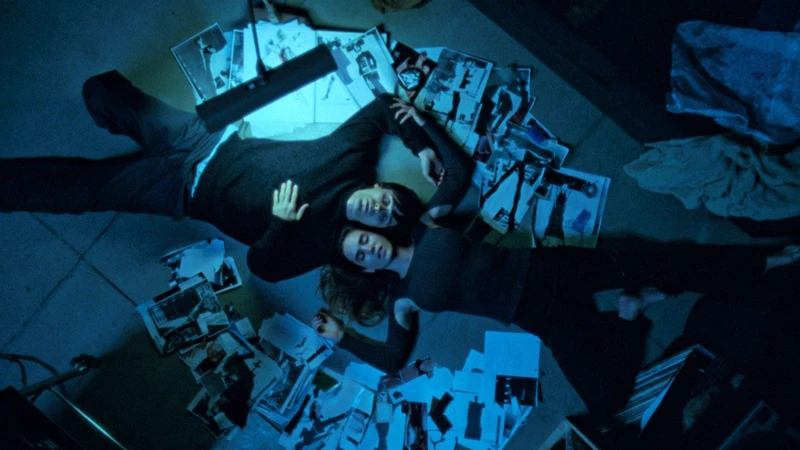In the realm of cinematic masterpieces, there are few films as enigmatic and thought-provoking as ‘Requiem for a Dream’. Directed by Darren Aronofsky, this visually stunning and emotionally harrowing film takes audiences on a journey through the depths of addiction, obsession, and shattered dreams. With its intricate plot, vivid symbolism, and powerful performances, ‘Requiem for a Dream’ has captivated viewers since its release in 2000. In this article, we will dive deep into the layers of meaning behind the film, exploring its symbolism, interpreting its themes, analyzing its impactful cinematic techniques, and discussing its lasting impact in the world of cinema.
The Power of Dreams in Cinema

Dreams have always held a special place in the world of cinema, serving as a conduit for storytelling and a window into the depths of the human psyche. Whether they are used to foreshadow events, convey hidden desires, or explore subconscious fears, dreams in cinema have the power to evoke strong emotions and create a captivating viewing experience. ‘Requiem for a Dream’ is no exception, as it delves into the realm of dreams to unravel the complex web of addiction and shattered ambitions. Through dream sequences that are both mesmerizing and haunting, the film transports viewers into the characters’ inner worlds, exposing their deepest fears, desires, and hopes. These dreams serve as a narrative device, offering glimpses into the characters’ subconscious and shedding light on their inner turmoil. By utilizing the power of dreams, ‘Requiem for a Dream’ takes audiences on a visceral journey, blurring the line between reality and fantasy, and leaving a lasting impact long after the credits roll.
The Plot of ‘Requiem for a Dream’

‘Requiem for a Dream’ tells a haunting and deeply disturbing tale of four individuals whose lives become entangled in the pursuit of their dreams. Set in Brooklyn, the film follows Sara Goldfarb, a lonely widow who becomes obsessed with appearing on a television game show. Her son, Harry, and his best friend, Tyrone, embark on a dangerous journey in the world of drug dealing, hoping to make enough money to start a business. Harry’s girlfriend, Marion, dreams of becoming a successful artist but finds herself spiraling into addiction alongside Harry. As their dreams of a better life slowly unravel, the characters are consumed by their obsessions, leading them down a dark and tragic path. The film presents a raw and unflinching portrayal of the destructive power of addiction and the devastating consequences it has on the human spirit. Through its gripping plot, ‘Requiem for a Dream’ explores the vulnerability of the human condition and the desperate lengths individuals will go to in order to fulfill their desires.
Symbolism and Imagery in ‘Requiem for a Dream’

In ‘Requiem for a Dream’, symbolism and imagery play a crucial role in conveying deeper meaning and enhancing the film’s impact. Director Darren Aronofsky expertly employs subtle motifs, striking colors, and evocative sound to immerse viewers in the characters’ experiences. One recurring motif in the film is the imagery of the television, representing both escapism and a distorted perception of reality. The characters find solace and hope in the false promises of the screen, while their lives deteriorate in the real world. Additionally, vivid colors are strategically used to evoke different emotions and highlight the characters’ states of mind. The vibrant red hues signify passion, desire, and addiction, while the cold blue tones reflect loneliness, despair, and isolation. Sound also plays a crucial role, with the hauntingly beautiful score by Clint Mansell intensifying the emotional impact of key scenes. The eerie sound design further creates an unsettling atmosphere, emphasizing the characters’ descent into darkness. Through its masterful use of symbolism and imagery, ‘Requiem for a Dream’ heightens the viewing experience and invites audiences to delve deeper into the complexities of addiction, dreams, and the human condition.
The Subtle Motifs
In ‘Requiem for a Dream’, Darren Aronofsky masterfully incorporates subtle motifs throughout the film, adding layers of depth and meaning to the narrative. These motifs serve as recurring symbols that hint at the characters’ struggles, desires, and ultimate downfall. One such motif is the television set, which represents both escapism and the destructive allure of illusions. As the characters become increasingly engrossed in their own obsessions and addictions, the television becomes a source of false hope and distorted reality. Another subtle motif is the recurring image of clocks ticking, symbolizing the relentless passage of time and the characters’ futile attempts to control their destinies. These motifs, woven into the fabric of the film, enhance the thematic richness and engage viewers in the unraveling of the characters’ lives and dreams.
The Role of Colors
In ‘Requiem for a Dream’, the use of colors plays a significant role in conveying emotions, themes, and the overall atmosphere of the film. Each color palette is carefully selected to enhance the storytelling and immerse the audience into the characters’ turbulent journey. The color blue, for example, is prominently used throughout the film to symbolize the characters’ sense of longing, despair, and the cold reality they find themselves in. Alternatively, the color red is employed to represent passion, addiction, and the destructive nature of their pursuits. The contrast between the vibrant reds and the stark blues creates a visual dichotomy that mirrors the characters’ internal struggles. Additionally, the film’s masterful use of color grading techniques intensifies the emotional impact, heightening the viewer’s perception of the characters’ experiences. From the cool tones of blue to the fiery hues of red, the colors in ‘Requiem for a Dream’ serve as a visual language, enriching the narrative and immersing the audience in the characters’ tumultuous journey.
The Use of Sound
In ‘Requiem for a Dream’, sound plays a pivotal role in enhancing the emotional impact of the film. The haunting, pulsating score composed by Clint Mansell perfectly complements the dark and intense atmosphere of the story. The recurring leitmotif of the main theme, known as “Lux Aeterna,” creates a sense of tension and impending doom, intensifying the gripping narrative. Additionally, the use of sound effects such as the rapid heartbeat and distorted sounds during moments of drug-induced hallucinations adds to the disorienting and chaotic nature of addiction. The juxtaposition of eerie silence and cacophonous soundscapes further amplifies the characters’ descent into madness. Each auditory element in ‘Requiem for a Dream’ serves a purpose, immersing the audience in the characters’ turbulent journey and magnifying the emotional impact of the film.
Interpretations and Themes

‘Requiem for a Dream’ poses thought-provoking interpretations and explores profound themes that resonate with viewers long after the credits roll. One central theme is the nature of addiction, depicting the devastating consequences it can have on individuals and their relationships. The film delves into the depths of addiction without glamorizing or romanticizing it, showcasing the destructive cycle that ensnares the characters.
The pursuit of dreams is another theme that intertwines with addiction. Each character in the film yearns for something beyond their current reality, whether it’s fame, love, or financial success. However, as their dreams become distorted and consumed by their addictions, the characters find themselves trapped in a never-ending loop of despair.
Obsession and its destructive power is yet another theme explored in ‘Requiem for a Dream’. The characters’ relentless pursuit of their desires leads them down a path of self-destruction, causing them to lose touch with reality and spiral further into despair. This theme serves as a cautionary tale about the dangers of unchecked obsession and its potential to consume one’s life.
The Nature of Addiction
The nature of addiction is a central theme explored in ‘Requiem for a Dream’, delving into its devastating impact on individuals and their relationships. The film portrays addiction not only as a physical dependence on substances but also as a psychological and emotional compulsion. It vividly portrays the characters’ descent into the depths of addiction, highlighting the destructive cycle of craving, indulgence, and despair. Each character in the film represents a different aspect of addiction, whether it be Harry’s relentless pursuit of drugs, Marion’s desperate need for validation and love, or Sara’s dependence on diet pills. Through their struggles, ‘Requiem for a Dream’ exposes the dark, all-consuming nature of addiction and its ability to erode one’s sense of self and connection to others. The film serves as a stark reminder of the devastating consequences that addiction can have on individuals and the importance of understanding and addressing this complex issue in society.
The Pursuit of Dreams
In ‘Requiem for a Dream’, the pursuit of dreams is a central theme that drives the characters forward but ultimately leads to their downfall. Each character yearns for something beyond their current circumstances, whether it’s Harry’s desire for wealth and success, Marion’s aspirations of becoming a famous artist, Tyrone’s hope for a better life, or Sara’s dream of fitting into her prized red dress. These dreams, fueled by ambition and a longing for fulfillment, propel the characters into a spiral of addiction and self-destruction. The film explores the human desire for a better life and the lengths people are willing to go to in order to achieve their dreams. However, it also serves as a cautionary tale, highlighting the devastating consequences that can arise when dreams turn into obsessions and personal boundaries are pushed to the extreme. The pursuit of dreams, as depicted in ‘Requiem for a Dream’, serves as a reminder of the delicate balance between ambition and self-destruction.
The Destructive Power of Obsession
In ‘Requiem for a Dream’, the destructive power of obsession is a prominent theme that runs throughout the narrative. The characters’ relentless pursuit of their dreams, fueled by their obsessions, leads them down a dark and harrowing path. Whether it’s Sara Goldfarb’s obsession with achieving a perfect body or Harry Goldfarb’s desperate pursuit of quick wealth, the film highlights the devastating consequences that arise from unchecked obsessions. These obsessions consume the characters, driving them to make increasingly destructive choices in an attempt to fulfill their desires. The film serves as a cautionary tale, showing how obsession can distort reality, tear relationships apart, and ultimately destroy lives. It forces viewers to confront the destructive nature of unchecked ambitions and serves as a stark reminder of the dangers of allowing obsessions to take control.
The Impact of Cinematic Techniques

The impact of ‘Requiem for a Dream’ goes beyond its compelling story and mesmerizing performances; it lies in the masterful implementation of cinematic techniques that elevate the film into a truly immersive and haunting experience. One of the most notable techniques is the meticulous use of editing, which creates a frenetic pace and amplifies the sense of unease. Through rapid cuts, montages, and juxtapositions, the film captures the chaotic nature of addiction and the characters’ descent into darkness. Additionally, the visual style of ‘Requiem for a Dream’ is nothing short of stunning. The cinematography evokes a sense of claustrophobia, with tight close-ups, skewed angles, and distorted perspectives that mirror the characters’ distorted lives. The use of vivid color palettes, particularly the recurring motif of red, intensifies the emotional impact of key scenes. The haunting musical score by Clint Mansell enhances the film’s atmosphere and adds an extra layer of emotional resonance, with the iconic track “Lux Aeterna” becoming synonymous with ‘Requiem for a Dream’. It is through the skillful implementation of these cinematic techniques that the film leaves an indelible mark on viewers, immersing them in the characters’ journey and making it an unforgettable cinematic experience.
The Juxtaposition of Editing
The juxtaposition of editing in ‘Requiem for a Dream’ is a masterful technique that enhances the film’s impact and intensifies its emotional journey. Through rapid cuts, cross-cutting, and parallel editing, director Darren Aronofsky creates a sense of chaos, urgency, and interconnectedness. This technique is particularly evident in the parallel editing of the characters’ lives as they spiral further into their addictions. The juxtaposition of their experiences, shown through quick and fragmented scenes, allows the audience to witness the devastating consequences of their choices in a visceral and powerful way. The editing style also serves to heighten the tension, as the fast-paced cuts create a sense of unease and uneasiness, mirroring the characters’ internal struggles. By skillfully utilizing the power of juxtaposition through editing, ‘Requiem for a Dream’ immerses viewers in a whirlwind of emotions and further amplifies the intensity of the film’s themes.
The Influence of Visual Style
The visual style of ‘Requiem for a Dream’ is a crucial element that enhances the storytelling and amplifies the emotional impact of the film. Director Darren Aronofsky, known for his distinct visual flair, employs a variety of techniques to create a unique and immersive cinematic experience. Through his use of rapid editing, extreme close-ups, and dynamic camera movements, Aronofsky captures the frenetic and chaotic nature of addiction. The film’s gritty and stylized visuals, with their high contrast lighting and exaggerated angles, mirror the characters’ descent into darkness and despair. The recurring use of split screens amplifies the sense of fragmentation and disconnection, reflecting the shattered dreams of the characters. Additionally, the use of surreal imagery, such as the iconic scene of the refrigerator breathing, adds an unsettling and dreamlike quality to the film. Aronofsky’s visual choices powerfully convey the characters’ internal struggles and serve as a visual metaphor for the destructive nature of addiction.
The Importance of Music
One of the defining elements of ‘Requiem for a Dream’ is its remarkable use of music, which plays a crucial role in shaping the overall cinematic experience. The haunting and mesmerizing score composed by Clint Mansell perfectly complements the themes and emotions portrayed on screen, intensifying the impact of every scene. The music becomes a character in itself, weaving its way through the narrative and enhancing the raw emotions felt by the audience. The iconic main theme, known as “Lux Aeterna,” has become synonymous with the film, evoking a sense of unease and despair. As the film progresses, the music becomes increasingly frenetic, mirroring the characters’ descent into chaos and their relentless pursuit of their dreams. The importance of music in ‘Requiem for a Dream’ cannot be overstated, as it heightens the tension, amplifies the emotions, and immerses viewers in the harrowing world portrayed on screen.
The Reception and Legacy of ‘Requiem for a Dream’
When ‘Requiem for a Dream’ was released in 2000, it received widespread critical acclaim for its bold and uncompromising portrayal of addiction and its impact on individuals. The film was praised for its powerful performances, particularly from Jared Leto, Ellen Burstyn, and Jennifer Connelly, who delivered emotionally charged portrayals of characters caught in the grips of their own personal demons. The raw and unflinching nature of the film polarized audiences, with some hailing it as a masterpiece while others found its explicit content and dark subject matter too unsettling. Despite the controversy, ‘Requiem for a Dream’ left a lasting impression on viewers, provoking discussions and debates about the portrayal of addiction and the consequences it has on individuals and society as a whole.
The impact of ‘Requiem for a Dream’ extends beyond its initial release, as it continues to inspire and influence filmmakers to this day. The film’s innovative and stylistic approach to storytelling, its use of visual symbolism, and its immersive soundtrack have become hallmarks of director Darren Aronofsky’s work and have left a lasting imprint on the landscape of cinema. Many aspiring filmmakers have drawn inspiration from the film’s unique storytelling techniques and its ability to evoke powerful emotional responses from audiences. ‘Requiem for a Dream’ serves as a testament to the enduring influence of visionary filmmaking and continues to be studied and admired by both film enthusiasts and aspiring filmmakers alike.
Over two decades since its release, ‘Requiem for a Dream’ remains a culturally relevant film that continues to resonate with audiences. Its exploration of addiction, obsession, and shattered dreams transcends time and speaks to the universal human experiences of desire, struggle, and the pursuit of happiness. The film’s themes and messages continue to be relevant in today’s society, where the allure of dreams and the consequences of unchecked ambition still hold sway. ‘Requiem for a Dream’ stands as a testament to the power of cinema to confront and challenge societal norms, igniting conversations and introspection long after the credits roll.
Critical Acclaim and Controversy
‘Requiem for a Dream’ has garnered critical acclaim for its raw and uncompromising portrayal of addiction and the human condition. The film’s unflinching examination of the destructive power of drugs and the downward spiral of its characters has been hailed as a haunting and unforgettable cinematic experience. While praised for its exceptional performances and visionary direction, ‘Requiem for a Dream’ has also faced controversy. Some critics argue that its graphic depiction of drug use and its disturbing imagery may be too intense for some viewers. However, it is precisely this uncompromising approach that has contributed to the film’s lasting impact and sparked important conversations about addiction and the pursuit of dreams. ‘Requiem for a Dream’ remains a polarizing masterpiece, revered by those who recognize its artistic merits and resonating with audiences who are unafraid to explore the darker aspects of the human experience.
Inspiration for Future Filmmakers
‘Requiem for a Dream’ has served as a profound source of inspiration for aspiring filmmakers, demonstrating the transformative power of storytelling and the ability to craft impactful narratives that resonate with audiences. The film’s raw and unflinching portrayal of addiction and its consequences has inspired numerous filmmakers to explore similar themes and delve into the darker aspects of human existence. The innovative visual techniques employed by director Darren Aronofsky, such as his use of rapid-fire editing and unique camera angles, have also influenced a new generation of filmmakers who seek to push the boundaries of traditional storytelling. By studying the groundbreaking techniques and deeply emotive storytelling of ‘Requiem for a Dream’, aspiring filmmakers gain valuable insights into the art of crafting compelling narratives that elicit powerful emotions and provoke critical thinking. It continues to be a touchstone for those who aspire to create thought-provoking and impactful films in the future.
Continued Cultural Relevance
‘Requiem for a Dream’ has stood the test of time and continues to hold cultural relevance even two decades after its release. The film’s unflinching portrayal of addiction, shattered dreams, and the destructive power of obsession resonates with audiences on a deep and visceral level. Its themes and imagery have seeped into popular culture, influencing subsequent films, music, and even fashion. The raw and uncompromising nature of ‘Requiem for a Dream’ has sparked discussions and debates about the nature of addiction and the lengths individuals will go to fulfill their desires. By shining a spotlight on these dark and uncomfortable aspects of human existence, the film forces viewers to confront uncomfortable truths about themselves and society at large. Its impact lingers, serving as a reminder of the harrowing consequences that can come from the pursuit of dreams and the power of addiction.
Conclusion
In conclusion, ‘Requiem for a Dream’ stands as a testament to the power of cinema to delve into the depths of the human experience. Through its intricate plot, rich symbolism, and powerful performances, the film forces audiences to confront the destructive nature of addiction, the pursuit of dreams, and the overwhelming power of obsession. The juxtaposition of editing, visual style, and music heighten the emotional impact, creating a visceral and unforgettable viewing experience. ‘Requiem for a Dream’ has garnered critical acclaim and continues to inspire future filmmakers with its bold storytelling and innovative techniques. Its exploration of addiction and shattered dreams remains culturally relevant, serving as a reminder of the harsh realities that can befall those who succumb to the allure of misguided ambitions. As we unravel the meaning behind this haunting film, we are left pondering our own dreams and the lengths we are willing to go to achieve them.
Frequently Asked Questions
1. What is the meaning behind the title ‘Requiem for a Dream’?
The title ‘Requiem for a Dream’ suggests a mournful ode to lost aspirations and shattered hopes. It signifies the tragic journey of the characters as they chase their dreams, only to be consumed by addiction and obsession.
2. Is ‘Requiem for a Dream’ based on a true story?
No, ‘Requiem for a Dream’ is not based on a specific true story. However, it is inspired by the novel of the same name written by Hubert Selby Jr., who drew from his own experiences and observations of addiction.
3. How does the film depict addiction?
‘Requiem for a Dream’ paints a dark and realistic picture of addiction, showing how it can gradually consume individuals and destroy their lives. It highlights the physical, mental, and emotional toll addiction takes on the characters, ultimately leading to their downfall.
4. What are some common interpretations of the film?
Common interpretations of ‘Requiem for a Dream’ include its commentary on the destructive nature of addiction, the pursuit of unattainable dreams, and the allure of escapism. It also explores themes of loneliness, desperation, and the loss of identity.
5. How does the film utilize symbolism?
‘Requiem for a Dream’ is rich in symbolism, using imagery such as the recurring motif of a red dress, the symbolism of water, and the parallel between the characters’ drug use and the pursuit of their dreams. These symbols add depth and meaning to the narrative.
6. What makes the editing style of ‘Requiem for a Dream’ noteworthy?
The editing style of ‘Requiem for a Dream’ is fast-paced and frenetic, mirroring the chaotic lives of the characters. Through rapid cuts, split screens, and montages, the film heightens the sense of urgency and tension, drawing viewers deeper into the narrative.
7. How does the music contribute to the film?
The haunting and mesmerizing score by Clint Mansell is an integral part of ‘Requiem for a Dream’. The music serves as a powerful emotional catalyst, intensifying the impact of the scenes and enhancing the overall viewing experience.
8. How did ‘Requiem for a Dream’ impact audiences and critics?
‘Requiem for a Dream’ divided audiences and critics upon its release, with its raw and unflinching depiction of addiction. While some praised its boldness and artistic vision, others found it too harrowing and disturbing. Nevertheless, the film left a lasting impression on those who experienced it.
9. What influence did ‘Requiem for a Dream’ have on future filmmakers?
‘Requiem for a Dream’ had a significant impact on future filmmakers, particularly in its innovative use of editing techniques and storytelling methods. It pushed boundaries and inspired a new generation of filmmakers to explore unconventional narratives and visual styles.
10. Why is ‘Requiem for a Dream’ still culturally relevant today?
‘Requiem for a Dream’ remains culturally relevant because its themes of addiction, dreams, and obsession continue to resonate with audiences. The film serves as a powerful cautionary tale and a poignant exploration of the human condition, making it timeless in its impact.







